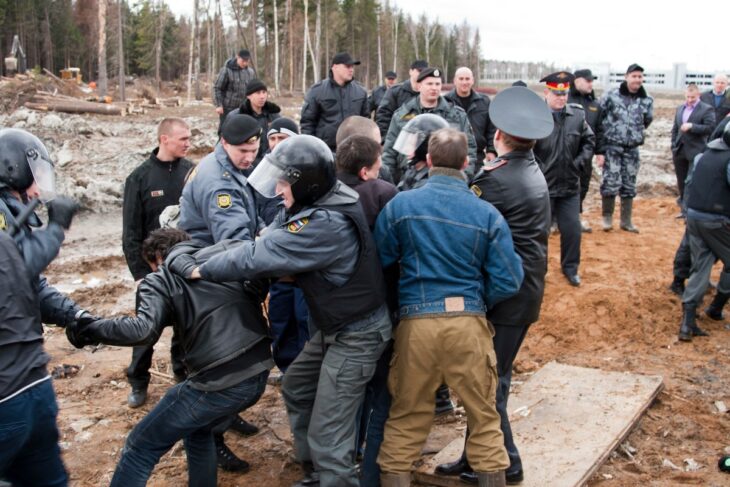
Rumors of the death of Russia’s civil society have been greatly exaggerated. Coverage of Russia has increased in recent years, but it seldom focuses on its civil society. This oversight appears to be due in part to two prevailing narratives. The first narrative portrays the country’s populace as “a lemming-like society” with a “passive and dysfunctional” public eager to “submit” to the rule of a strong leader. The other holds that internal crackdowns, such as legislation that requires NGOs participating in “political activity” which also receive foreign funding to register as “foreign agents,” have largely smothered the emerging civil society that surfaced following the fall of the Soviet Union.
However, Russian civil society is more vibrant, diverse, and resilient than commonly believed. Indeed, recent events demonstrate it still plays an active role, and that its voice is occasionally heeded by the government. The reaction to the “Moscow Case” is only the latest manifestation of popular discontent. While news primarily focused on “Moscow’s Summer of Discontent,” this summer also witnessed civil society protesting against unpopular plans to build a church over a park in Yekaterinburg, the treatment of Ivan Golunov, and new landfills to deal with Moscow’s trash problem.
Currently, “Russia is inching toward a new social awakening.” Events in Russia reflect a gradual, but important, transformation. Social attitudes are shifting. People are beginning to take an active role in society. For example, since the mid-2000s, volunteering “started to take off” as people became more financially stable and informed. The government’s lackluster response to wildfires and a series of floods at the beginning of the decade caused these more involved citizens to reevaluate the ability of the government to deal with the problems. They “realized that what they were doing was more effective than what the government had to offer.” This laid the roots for today’s activism.
As faith in the government diminishes, people are increasingly confident in their ability to enact change. While the wildfires raged, grass-roots activists and opposition leaders brought together more than 5,000 people for protests to protect the Khimki Forest against plans to develop a highway between Moscow and St. Petersburg. In 2010, Medvedev responded to the protests by issuing “a temporary moratorium on the project.” This small victory galvanized Russia’s activist community.
Previously, activism was an anomaly and “activists were viewed as crazy,” but things are changing. Growing activism strengthens civil society. Civil society consists of people with “something to protect,” like “their property, their private space and their constitutional rights.” To defend such interests, Russians “increasingly mobilize on issues such as pensions, the environment, healthcare, and education.” Perhaps to the disappointment of the West, many of these protests are “totally lacking a political component.” Instead, intrusion of entities backed by the authorities into people’s private space creates “nonpolitical conflicts.” Such local grass-roots movements are the core of Russia’s burgeoning civil society. A Centre for Economic and Political Reform study revealed three quarters of protests dealt with “local socio-economic issues such as unpaid wages, layoffs, closures of industrial plants and pollution.” These protests, such as the ongoing protests in Shiyes against a new landfill, are becoming “the new normal” in Russia.
Increases in activism accompany a shift in popular attitudes. While the majority of Russians still view themselves as powerless to change their environment, a 2017 studyrevealed that 33 percent of Russians say they are ready to take responsibility in their country. A recent survey by the Levada Center reveals nearly a quarter of Russians are “willing to protest for better living standards and civic freedoms,” which is a marked increase from the less than 10 percent last year. Although only about 5 percent of the population reports it is regularly active in NGOs or “political activity,” around 30 percent participate in occasional non-political activity in their communities. Crucially, these statistics show people “are starting to realize that their life, in things great and small, depends on them.”
Grass-roots activism is also shaping the growth of Russia’s civil society. In many cases spontaneous protests lead to associations among residents, and some of these associations evolve into “permanent civic organizations.” For instance, the Federation of Russian Car Owners (FAR), brought drivers together “to protest rising import duties, gas prices and police corruption.” Grass-roots activism enables loosely organized groups to come together to form weightier institutions with collective power. These collective organizations are shifting civic consciousness “beyond the individual’s private space into the public domain.” What it means to be a Russian citizen is changing.



